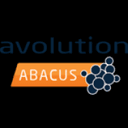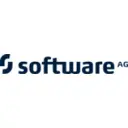LeanIX Enterprise Architecture Management (EAM)
Overview
What is LeanIX Enterprise Architecture Management (EAM)?
LeanIX Enterprise Architecture Management (EAM) is a solution designed to assist organizations in effectively managing their IT landscape transformation and mitigating associated risks. According to the vendor, LeanIX EAM provides real-time overviews of the IT landscape and business capabilities, enabling...
Reviewer Pros & Cons
Pricing
Entry-level set up fee?
- No setup fee
Offerings
- Free Trial
- Free/Freemium Version
- Premium Consulting/Integration Services
Would you like us to let the vendor know that you want pricing?
38 people also want pricing
Alternatives Pricing
Product Details
- About
- Tech Details
What is LeanIX Enterprise Architecture Management (EAM)?
LeanIX Enterprise Architecture Management (EAM) is a solution designed to assist organizations in effectively managing their IT landscape transformation and mitigating associated risks. According to the vendor, LeanIX EAM provides real-time overviews of the IT landscape and business capabilities, enabling users to make data-driven decisions and accelerate business transformation. It caters to companies of all sizes and is utilized by professionals in various industries such as Enterprise Architects, IT Managers, IT Operations, IT Governance, IT Strategy, Financial Services, Manufacturing, Retail, Healthcare, and Technology.
Key Features
Application Portfolio Management: Visualize and gain real-time insights into your application landscape, IT components, and business capabilities with powerful out-of-the-box reports. Explore data interactively across multiple Fact Sheet types and create custom diagrams based on live inventory data.
Technology Risk Management: Identify and address technology obsolescence risk by uncovering applications dependent on end-of-life IT components. Prioritize remediation efforts and proactively mitigate technology risks to ensure compliance with regulations.
Business Transformation Management: Plan and execute architectural roadmaps to accelerate business transformations. Define high-level changes to your IT landscape and centrally manage all transformations and impacts. Track project milestones and make informed decisions based on real-time information.
Customizable Dashboards & KPIs: Visualize selected content, reports, and customizable KPIs on configurable dashboards. Collect updates and insights from stakeholders using configurable surveys. Enhance collaboration through to-dos and comments features.
Reports and Diagrams: Gain real-time insights into your IT landscape with a variety of configurable reports. Visualize dependencies in your IT landscape using diagrams. Configure and visualize multiple collections of reports and diagrams for better navigation. Monitor and evaluate progress towards Environmental, Social, and Governance (ESG) goals.
Roadmap and Scenario Planning: Create visual reference points with milestones to track major events and pending decisions. Define the impact of projects on your IT landscape and manage high-level changes. Centrally view and track all transformations and impacts on the IT landscape.
Reference Catalogs: Mitigate technology obsolescence risk with the Lifecycle Catalog. Leverage a catalog of over 6500 applications with the SaaS Catalog. Adopt standard tech category taxonomies with the Tech Category Catalog. Accelerate Business Capability modeling with the Business Capability Catalog.
Out-of-the-Box Integrations: Seamlessly integrate with critical enterprise systems to automate data synchronization. Import and export data easily using the low-code Integration API. Leverage REST and GraphQL APIs for high-performance queries. Extend the LeanIX Meta Model to customize the solution according to your organization's needs.
Continuous Collaboration: Foster collaboration across your organization to build a trusted data source. The intuitive user interface reduces training efforts and usage barriers. Collaborate effectively with surveys, quality seals, and subscriptions. Automate data maintenance to reduce manual effort.
Enhance Architecture Modeling: Achieve continuity across workspaces by integrating LeanIX with Lucidchart for dynamic diagramming. Create accurate and interactive diagrams to accelerate enterprise architecture. Share knowledge and connect Lucidchart diagrams to LeanIX Fact Sheets. Model Business Processes with up-to-date information on Applications, IT Components, and User Groups.
LeanIX Enterprise Architecture Management (EAM) Technical Details
| Operating Systems | Unspecified |
|---|---|
| Mobile Application | No |







